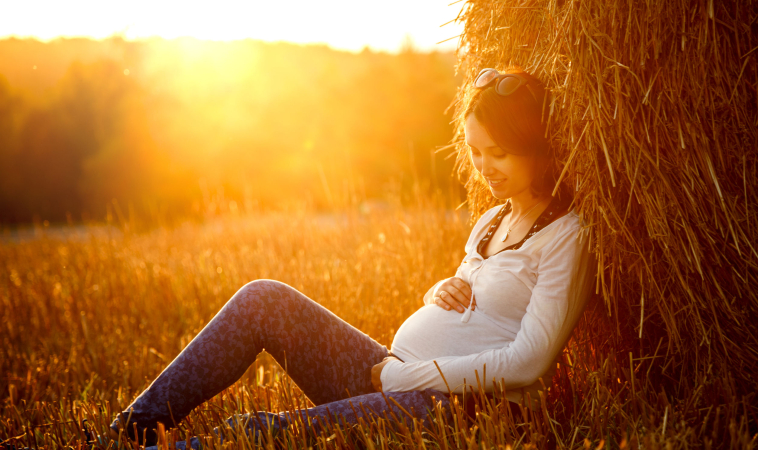The Body Makes Vitamin D Naturally from Exposure to Sunlight
Vitamin D is a fat-soluble nutrient the body makes naturally from direct sun exposure to the skin. Despite many food sources having been fortified with Vitamin D, levels remain epidemically low in North Americans.1 While genetics contribute to these low levels, many North Americans are low in vitamin D because of what our name suggests – we live in the North. Often our body’s exposure to the sun during the summer months is not enough to maintain adequate storage of this nutrient to last throughout the rest of the year. People living in parts of North America who are exposed to year-round sun, such as in sunny California, naturally have higher levels of vitamin D compared to those of us that must endure the winter seasons.1 Low vitamin D status has been well-known for its negative effects on bone mineralization, as well as autoimmune diseases, cardiovascular disease, mood disorders and cancer.1 It’s important to have your levels checked – most people supplement low levels of vitamin D during the winter only, but if your baseline levels of vitamin D are low, this may not be enough to improve your levels for optimal health.Dosing vitamin D higher than the daily recommended value for a limited amount of time is considered safe, but should only be based on your vitamin D levels, and on recommendation by a qualified health professional.
How does vitamin D impact the health of the baby?
High rates of low vitamin D status in pregnant women have been reported in nearly all populations. This is particularly worrisome as the ultimate source of vitamin D for a fetus is transfer from the mother through the placenta. Maintaining adequate levels of vitamin D during pregnancy is important for the growth and development of the fetus and also influences the child’s health out of the womb. Low vitamin D status in pregnant women has been associated with lower bone mineral density in newborns – this is because vitamin D increases calcium absorption in the mother to pass on to fetus; extreme vitamin D deficiency during pregnancy and in the early life of a child is associated with the bone condition, rickets.2 Low vitamin D in pregnancy can contribute to a hypersensitive and/or imbalanced immune system in a child, typically manifesting as conditions such as eczema, asthma, allergies and high susceptibility to respiratory infections.2-3 Low vitamin D status during pregnancy has been linked to autism as well as diseases that occur in adulthood, such as multiple sclerosis.2-3
Vitamin D status can impact the outcome of a pregnancy
Low vitamin D levels have been linked to early and/or recurrent miscarriage as low levels negatively effect health of the immune system, leading to the development of antibodies that can target the newly conceived.3 Inadequate vitamin D levels increases the risk for gestational diabetes and pre-eclampsia, and increases the risk of C-section delivery, and pre-term birth (birth before 37 weeks gestation).2-4 Insufficient vitamin D levels have also been found to play a role in postpartum depression.3
There are a number of risk factors that can lead to vitamin D deficiency or insufficiency during pregnancy. The most common risk is low exposure to sunlight, perpetuated through excessive sunscreen use and covering the skin. Vitamin D status also depends on the region in which you live, exposure to pollution, and poor dietary intake of vitamin D. People with dark pigmented skin are also at higher risk for vitamin D deficiency.2
Foods that are rich sources of vitamin D include:5
- Salmon
- Sardines
- Cow’s milk
- Tuna
- Eggs
- Shitake mushrooms
Importance of Vitamin D Screening
It’s important that you are screened for vitamin D deficiency if you are pregnant or are planning for pregnancy. If you live in North America, chances are, you’re low. If levels are detected as low, supplementing vitamin D is important to sustain a healthy pregnancy and support the growing baby (though a prescription to spend 9 months in a sunny, warm climate during your pregnancy can help!). Also, though it may be the best natural way to get your vitamin D, excessive sun exposure is not recommended. Some people may only need to increase their dietary sources or get a bit more sunlight, but the majority of us require higher doses of vitamin D in order to achieve optimal levels – a qualified medical professional, such as a naturopathic doctor, is able to assess your levels and recommend the proper dosage of vitamin D individualized to your vitamin D status.
 Dr. Tanya Lee, N.D. received her Honours Bachelor of Science degree in Biochemistry and Biomedical Sciences from McMaster University, and was trained as a Naturopathic Doctor at the Canadian College of Naturopathic Medicine. Dr Lee practices full-time between two clinics located in Toronto and Milton Ontario and has been voted Milton’s favourite Naturopath in 2013 and 2014. Her primary care practice focuses on family medicine, treating a wide variety of conditions such as hormonal (endocrine) disorders, fertility, digestive problems, cardiovascular disease, diabetes, insomnia and fatigue. She has a special interest in the treatment of autoimmune diseases, paediatric and perinatal health. Tanya offers her clinical knowledge to a number of publications, including the Natural Path
Dr. Tanya Lee, N.D. received her Honours Bachelor of Science degree in Biochemistry and Biomedical Sciences from McMaster University, and was trained as a Naturopathic Doctor at the Canadian College of Naturopathic Medicine. Dr Lee practices full-time between two clinics located in Toronto and Milton Ontario and has been voted Milton’s favourite Naturopath in 2013 and 2014. Her primary care practice focuses on family medicine, treating a wide variety of conditions such as hormonal (endocrine) disorders, fertility, digestive problems, cardiovascular disease, diabetes, insomnia and fatigue. She has a special interest in the treatment of autoimmune diseases, paediatric and perinatal health. Tanya offers her clinical knowledge to a number of publications, including the Natural Path
References:
- Hilger J et. al. A systematic review of vitamin D status in populations worldwide. Br J Nutr. 2014 Jan 14;111(1):23-45.
- Dror DK, Allen LH. Vitamin D inadequacy in pregnancy: biology, outcomes, and interventions.Nutr Rev. 2010 Aug;68(8):465-77
- Genuis SJ. Maternal and Pediatric Health Outcomes in relation to Gestational Vitamin D Sufficiency. Obstet Gynecol Int. 2015;2015:501829. Epub 2015 Dec 6.
- Qin LL et. al Does Maternal Vitamin D Deficiency Increase the Risk of Preterm Birth: A Meta-Analysis of Observational Studies. 2016 May 20;8(5)
- World’s Healthiest Foods: Vitamin D http://whfoods.com/genpage.php?tname=nutrient&dbid=110

















